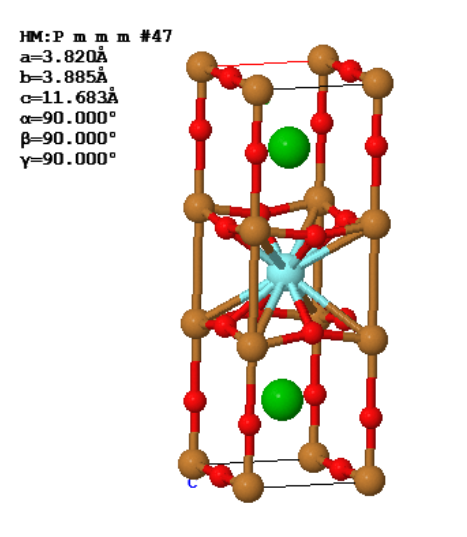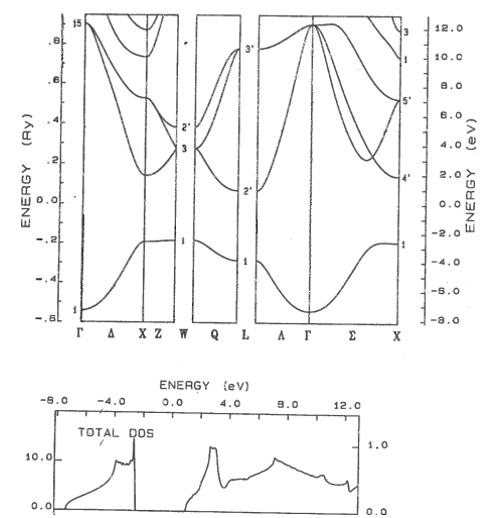
Name Matrikelnr.
Problem 1
The unit cell of a crystal is shown below.

(a) What is the Bravais lattice?
(b) What are the primitive reciprocal lattice vectors of this crystal?
(c) How many optical branches are there in the phonon dispersion relation of this crystal?
(d) What is the space group and the point group of this crystal?
Solution
Problem 2
(a) In a diffraction experiment, x-rays with wavevector of $\vec{k}=0.5\times 10^{10}\,\hat{x}$ m-1 are directed at a crystal and a diffracted peak is observed at $\vec{k}'= 0.3\times 10^{10}\,\hat{x}+0.4\times 10^{10}\,\hat{y}$ What is the reciprocal lattice vector associated with this diffraction peak?
(b) What is the largest reciprocal lattice vector that can be measured using x-rays with a wave vector of $\vec{k}=0.5\times 10^{10}\,\hat{x}$ m-1?
(c) Suppose many reciprocal lattice vectors have been measured. How could you use this data to determine the Bravais lattice?
(d) If x-rays with a shorter wavevector of $\vec{k}=0.2\times 10^{10}\,\hat{x}$ m-1 instead of $\vec{k}=0.5\times 10^{10}\,\hat{x}$ m-1 are used in the diffraction experiment, how would the reciprocal lattice vectors change?
Solution
Problem 3
(a) What is the integral of the phonon density of states over all frequencies?
(b) How do you calculate the phonon contribution to the specific heat?
(c) How can you calculate the values of the spring constants that are needed to calculate the phonon dispersion relation?
(d) How can you measure the values of the spring constants in an experiment?
Solution
Problem 4
An electronic band structure is shown below. There are four electrons per primitive unit cell.

(a) How many electrons per primitive unit cell are there in the lower band between -2 eV and -8 eV?
(b) How would you calculate the chemical potential? Draw approximately the chemical potential into the band structure.
(c) Is this a metal, semiconductor, or insulator? Explain your answer.
(d) What do the letters on the horizontal axis represent? What are the units of the horizontal axis?
Solution